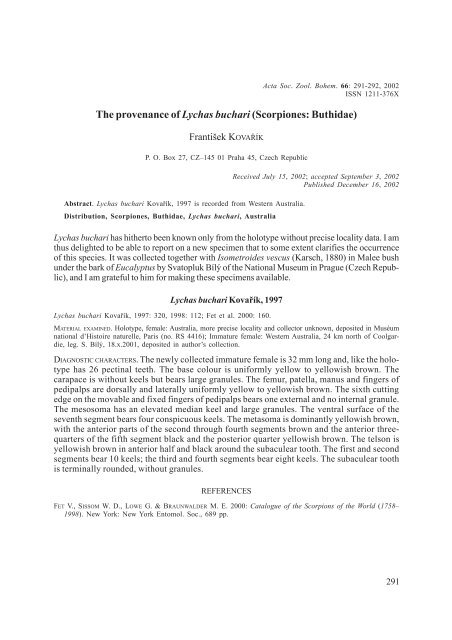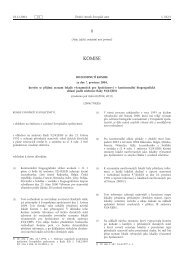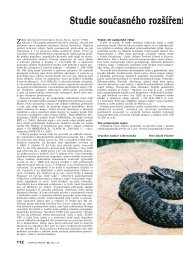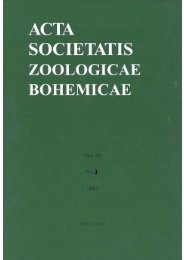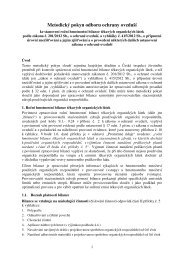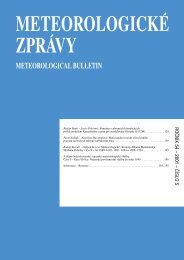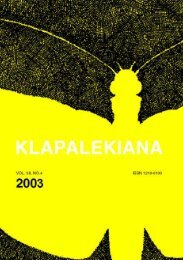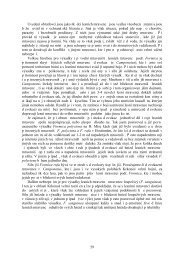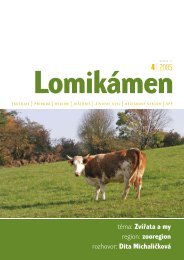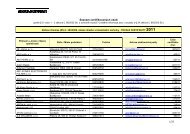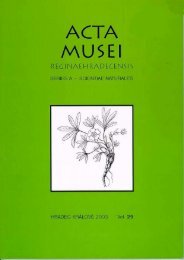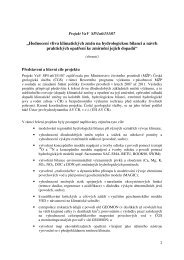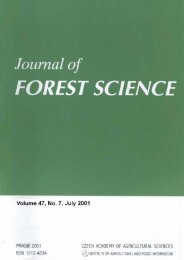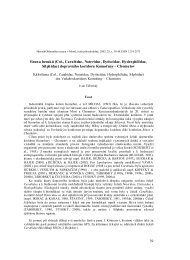Distribution and taxonomy of some Synapsis species, with ...
Distribution and taxonomy of some Synapsis species, with ...
Distribution and taxonomy of some Synapsis species, with ...
You also want an ePaper? Increase the reach of your titles
YUMPU automatically turns print PDFs into web optimized ePapers that Google loves.
Acta Soc. Zool. Bohem. 66: 291-292, 2002<br />
ISSN 1211-376X<br />
The provenance <strong>of</strong> Lychas buchari (Scorpiones: Buthidae)<br />
František KOVA(ÍK<br />
P. O. Box 27, CZ–145 01 Praha 45, Czech Republic<br />
Abstract. Lychas buchari Kova&ík, 1997 is recorded from Western Australia.<br />
<strong>Distribution</strong>, Scorpiones, Buthidae, Lychas buchari, Australia<br />
Received July 15, 2002; accepted September 3, 2002<br />
Published December 16, 2002<br />
Lychas buchari has hitherto been known only from the holotype <strong>with</strong>out precise locality data. I am<br />
thus delighted to be able to report on a new specimen that to <strong>some</strong> extent clarifies the occurrence<br />
<strong>of</strong> this <strong>species</strong>. It was collected together <strong>with</strong> I<strong>some</strong>troides vescus (Karsch, 1880) in Malee bush<br />
under the bark <strong>of</strong> Eucalyptus by Svatopluk Bílý <strong>of</strong> the National Museum in Prague (Czech Republic),<br />
<strong>and</strong> I am grateful to him for making these specimens available.<br />
Lychas buchari Kova!ík, 1997<br />
Lychas buchari Kova&ík, 1997: 320, 1998: 112; Fet et al. 2000: 160.<br />
MATERIAL EXAMINED. Holotype, female: Australia, more precise locality <strong>and</strong> collector unknown, deposited in Muséum<br />
national d’Histoire naturelle, Paris (no. RS 4416); Immature female: Western Australia, 24 km north <strong>of</strong> Coolgardie,<br />
leg. S. Bílý, 18.x.2001, deposited in author’s collection.<br />
DIAGNOSTIC CHARACTERS. The newly collected immature female is 32 mm long <strong>and</strong>, like the holotype<br />
has 26 pectinal teeth. The base colour is uniformly yellow to yellowish brown. The<br />
carapace is <strong>with</strong>out keels but bears large granules. The femur, patella, manus <strong>and</strong> fingers <strong>of</strong><br />
pedipalps are dorsally <strong>and</strong> laterally uniformly yellow to yellowish brown. The sixth cutting<br />
edge on the movable <strong>and</strong> fixed fingers <strong>of</strong> pedipalps bears one external <strong>and</strong> no internal granule.<br />
The mesosoma has an elevated median keel <strong>and</strong> large granules. The ventral surface <strong>of</strong> the<br />
seventh segment bears four conspicuous keels. The metasoma is dominantly yellowish brown,<br />
<strong>with</strong> the anterior parts <strong>of</strong> the second through fourth segments brown <strong>and</strong> the anterior threequarters<br />
<strong>of</strong> the fifth segment black <strong>and</strong> the posterior quarter yellowish brown. The telson is<br />
yellowish brown in anterior half <strong>and</strong> black around the subaculear tooth. The first <strong>and</strong> second<br />
segments bear 10 keels; the third <strong>and</strong> fourth segments bear eight keels. The subaculear tooth<br />
is terminally rounded, <strong>with</strong>out granules.<br />
REFERENCES<br />
FET V., SISSOM W. D., LOWE G. & BRAUNWALDER M. E. 2000: Catalogue <strong>of</strong> the Scorpions <strong>of</strong> the World (1758–<br />
1998). New York: New York Entomol. Soc., 689 pp.<br />
291


